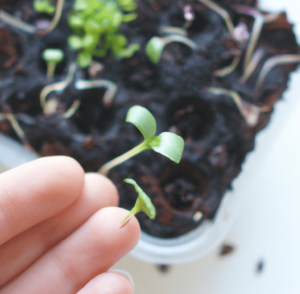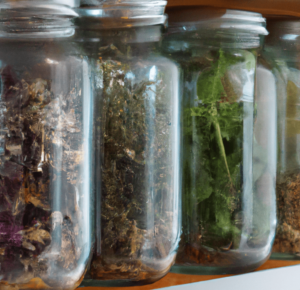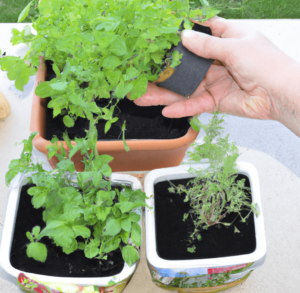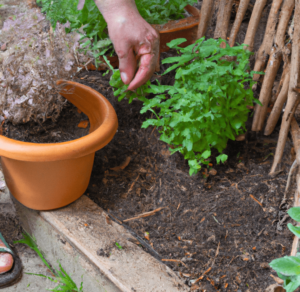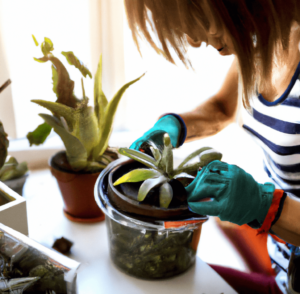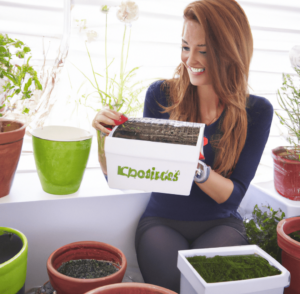Any garden benefits from flowers but learning how to grow flowers from seeds or how to grow flowers from cuttings can be really rewarding. You can grow new plants using this method of propagation without using seeds or buying immature plants whether you’re a pro or just starting out!
Preparing to Plant
It’s crucial to take into account a number of aspects that will affect the growth and health of your plants when getting ready to plant. In gardening guides, this includes the plant’s stem, the soil, the growth environment, and the water.
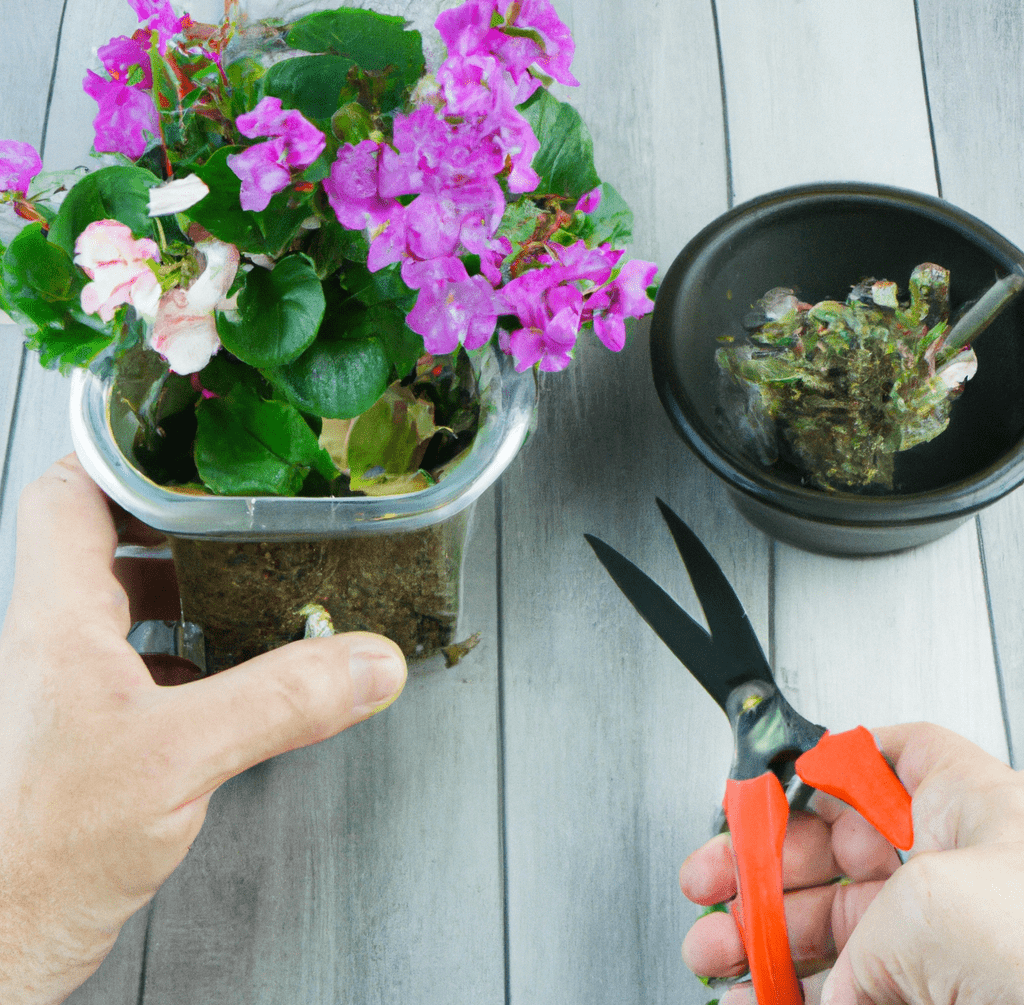
Choosing the Right Cuttings
When choosing cuttings for your garden, keep the following in mind:
- Growing Conditions: When selecting cuttings, make sure they originate from healthy plants that are thriving in a setting comparable to the one in which you intend to grow the young plants.
- Water: Search for hydrated, plump cuttings rather than wilted or dry ones. This will increase your chances of success when it comes to establishing new plants and growing them.
- Soil: Take into account the kind of soil and its surroundings where the cutting was made. Make sure to choose cuttings from plants that have been grown in soil that is comparable to the soil that will be used in your potting mix.
- Container Mix: Your choice of potting mix can also affect how well your cuttings do. Cuttings should be rooted in a mix that drains well but has some moisture retention.
- Length of Stem: The success of your cutting may be influenced by the stem length you select. While lengthier cuttings may take longer to root, they will eventually grow into larger, more established plants. Shorter cuttings are easier to manage and have a higher chance of establishing sooner.
As you’re learning how to grow flowers from cuttings, keep these best practices in mind.
Preparing the Soil
The success of your garden depends on the soil in which you place your cutting or seedling. The development of the roots, plant growth, and general health of your plants can all be greatly influenced by the way the soil is prepared:
- Start by clearing away any rubbish or rocks and breaking up any large clumps of soil to prepare the soil. This will provide an atmosphere that is loose and aerated, perfect for root growth.
- Next, to increase the soil’s nutrient level, take into account adding compost, manure, or other organic materials. A rooting hormone may also be used to promote the growth of roots when planting a cutting. This might be a helpful tool to make sure that your cutting forms roots and begins to grow successfully.
- Because different plants have varied needs, it’s also critical to consider the pH of your soil. With a straightforward kit, you may test the pH level of the soil and make any necessary adjustments by adding sulfur or lime to acidic or alkaline soils, respectively.
Deciding on a Location
The quality of cut flowers ultimately depends on the quality of the soil in which the plants are grown. The kind of soil and its fertility should be taken into account while choosing a place for your flower farm as you’re gardening.
- You should pick a spot where the soil conditions can support the growth of the flowers you want because different plants have varied soil needs.
- The local temperature and weather conditions are additional crucial issues to take into account. This may have an effect on the development and continuation of your plants as well as the durability of your cut flowers.
- When deciding where to locate your flower farm, take into account the typical temperature, rainfall, and wind patterns.
- For your flower bouquets, it’s necessary to take into account the local market in addition to the soil and environment. Are there any nearby supermarkets or florists who could be interested in buying your cut flowers? What level of rivalry is there in the neighborhood?
All of these should be taken into account when you’re learning how to grow annuals and perennials or other types of flowers as well.
Planting the Cuttings
Another step in how to grow flowers from cuttings includes planting:
- To lessen the shock of transplantation, soak the cuttings in water for about an hour prior to planting.
- Fill a pot with a mix of well-draining soil. Verify that the ground is damp but not soggy.
- To promote the growth of roots, dip the cutting’s stem in a rooting hormone. Although this step is optional, it may be beneficial for plants that root slowly.
- Insert the cutting about one-third to one-half of the way into the soil mixture. To remove any air pockets, compact the earth surrounding the cutting.
- Keep the soil in the pot moist but not soggy, and place it in direct, bright light. To boost humidity and encourage rooting, it’s also a good idea to cover the pot with a propagator or plastic bag.
Proper Cutting Spacing
It’s crucial to take into account the appropriate spacing between cuttings when learning how to grow flowers from cuttings. This makes it possible to guarantee that each cutting has enough space to establish roots and grow into a strong plant.
Cuttings need to be separated from one another to allow for sufficient water and air circulation. If the cuttings are placed too closely together, they could become crowded and find it difficult to take in the water and nutrients they need to grow it will make it simpler to take care of the growing plants because you will have more access to their leaves and stems and assist avoid the spread of disease.
Depth for Planting
Another factor to think about as you learn how to grow flowers from cuttings is the depth of the plants:
- Softwood cuttings should be inserted into the soil mixture between one-third and one-half of their length.
- Semi-hardwood Cuttings: Semi-hardwood cuttings should be inserted into the soil mixture about two-thirds of the way along their length.
- Hardwood cuttings should be buried the farthest, with just the top leaf node showing above the soil.
You may ensure that enough stem is below the soil to produce roots while still allowing the top portion of the stem to photosynthesize and support the growing plant by planting cuttings at the proper depth.
Remember to always verify the exact instructions for the plant you are propagating because the depth for planting cuttings may vary depending on the type of plant.
Watering and Care Instructions
As you learn how to grow flowers from cuttings, you need to learn about watering and care:
- Stem cuttings must be maintained constantly moist, but not drenched. Underwatering can cause the cuttings to dry out while overwatering can result in rot. Avoid upsetting the cuttings by watering the soil gently with a watering can with a fine nozzle.
- Make sure your stem cuttings are planted in wet, well-draining soil. Sand and peat moss combined is a wise choice. Do not use dense clay soils.
- Consistently maintain a warm, humid environment. You can accomplish this by covering the pot with a plastic bag or by using a propagator. Once the cuttings have rooted, check on them frequently and take the plastic cover off.
- Avoid letting the cuttings’ stems come into contact with the ground. It will also assist the stem to concentrate its efforts on roots and prevent decay.
Rooting and Transplanting
Transplanting stem cuttings into their ultimate pot or outdoor site is necessary once they have developed roots and begun to grow and you’re really getting into how to grow flowers from cuttings:
- Check to see if the cuttings are prepared: By gently tugging on the stem, you can see if the cuttings have developed roots. The cutting is ready to be transplanted if there is resistance, which indicates that roots have formed.
- Put a well-draining potting mix appropriate for the kind of plant you’re cultivating in a pot.
- Carefully take the cutting from the container and plant it in the potting soil while transplanting. Be sure to plant it at the same depth at which it was growing before.
- Make sure to thoroughly water the newly planted cutting while taking care not to overwater it.
- Keep the soil in the pot moist but not soggy and place it in a bright, indirect area of light. As the plant becomes established in its new pot, gradually cut back on watering.
In order to protect the tender new roots, it’s crucial to keep this in mind and be patient and kind during the process.
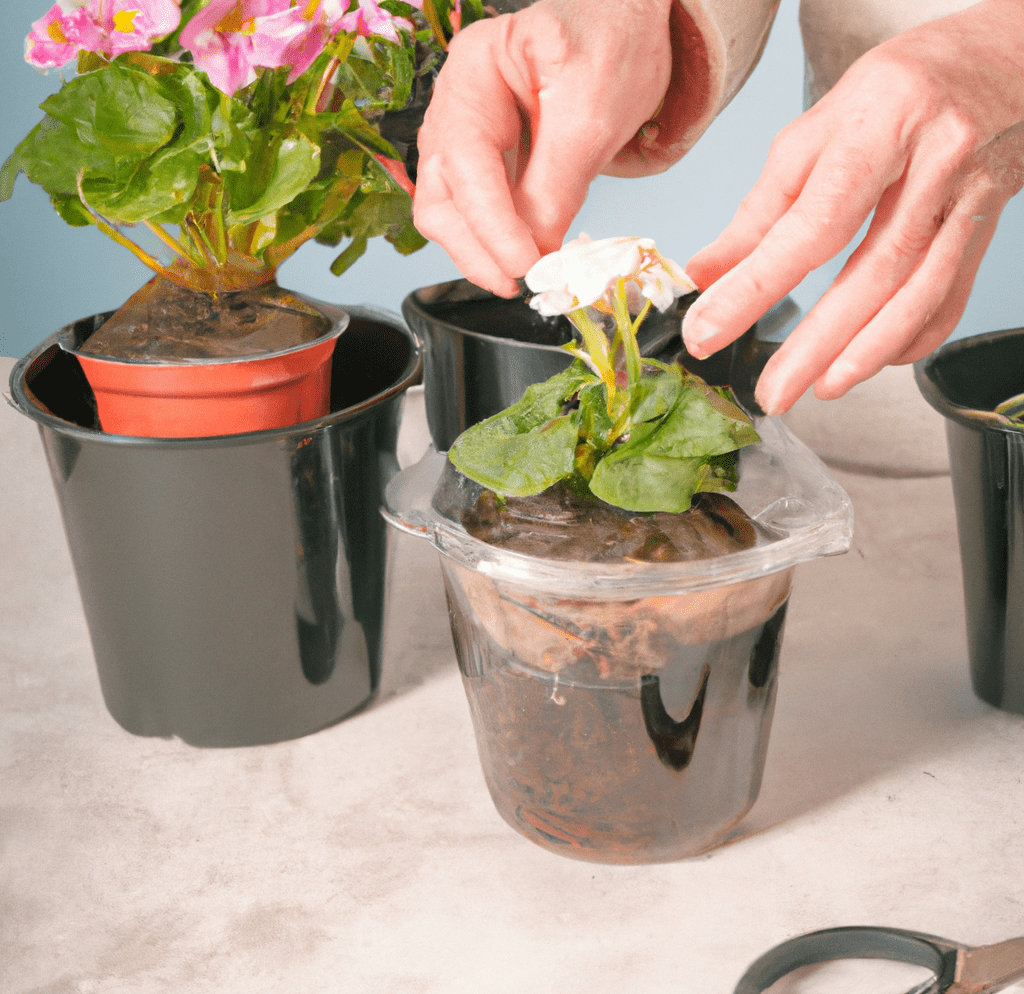
How to Care for Cuttings
Now that you know how to grow flowers from cuttings, take care of them with:
- Watering: Water your cuttings frequently to maintain a constantly moist soil environment. Cuttings can dry out or decay if they are overwatered or underwatered, respectively.
- Light: To encourage growth, place your cuttings under a bright, indirect light. Avoid direct sunlight as much as possible as it can blister the tender young growth.
- Rooting hormone: Consider utilizing a rooting hormone to aid in promoting rooting. Cuttings that take a long time to root will benefit the most from this. Before planting, merely dunk the stem’s cut end into the rooting hormone.
- Consistent temperature and humidity: Maintain a constant temperature and humidity level for your cuttings’ growing habitat. Growing and rooting will be encouraged by a warm, humid atmosphere.
- Inspect often: Check your cuttings frequently to see how they’re doing. Search for evidence of fresh growth or roots poking through the stem.
You can give your plant cuttings the best opportunity to root and develop into strong plants by adhering to these instructions.
When to Transplant Cuttings
Now that you know how to grow flowers from cuttings, when do they need to be transplanted:
- Softwood Cuttings: Softwood cuttings need to be rooted in the soil as soon as possible after they have developed roots, which might take a few days to a few weeks.
- Semi-hardwood Cuttings: After roots have grown, which usually takes a few weeks to a few months, semi-hardwood cuttings should be transplanted.
- Hardwood Cuttings: Be patient and wait until the cutting has developed roots and is exhibiting signs of growth before transplanting it into the soil. Hardwood cuttings can take several months to a year or more to take root.
Choosing the Right Pot or Garden Bed
In how to grow flowers from cuttings, you need to choose the right pot or gardening bed by keeping these in mind:
- Water: To prevent water from accumulating and causing root rot, make sure the pot or garden bed you select has proper drainage. If you’re using a pot, be sure it has drainage holes in the bottom.
- Soil: The soil you select should be suitable for the plant kind you are cultivating. It should have the proper pH, be well-draining, and be nutrient-rich. Use potting soil that has been specially designed to meet the demands of your plant.
- Growing: The size of the garden bed or pot should correspond to the plant’s mature size. The roots shouldn’t be crowded, as this could result in growth that is stunted. On the other hand, a garden bed or pot that is overly big might result in saturated roots and an abundance of soil moisture.
- Rooting hormone: To promote root growth when starting from cuttings, take into account employing a rooting hormone. Your cuttings will have a better chance of developing roots and growing into healthy plants if you do this.
- Plant stem: To prevent bending or breaking, the plant stem should be supported, especially for taller plants. Think about utilizing a cage or stake as support.
Maintaining and Caring for Your Flowers
After successfully learning how to grow flowers from cuttings, you can maintain your flowers with:
- Watering: Avoid drowning the soil in water, as this might cause root rot. Deeply water your plants and let the soil partially dry in between applications.
- Light: To encourage photosynthetic activity and plant growth, give your plants plenty of direct, bright light. Keep them away from direct sunshine, which can burn the foliage.
- Fertilizer: After your plants have taken root, you can start giving them frequent fertilizer applications to give them the nutrients they need for strong growth. Use a water-soluble, balanced fertilizer as directed by the manufacturer.
- Pruning: To encourage bushiness and healthy development, prune or your plants as needed. To promote new development from the plant’s roots, trim back lanky stems.
Pest and Disease Control
For gardeners, pests and diseases can be a big problem since they harm plants and make them less healthy and attractive overall. It’s important to take proactive measures to prevent and control pest and disease issues to protect your hard work and everything you’ve learned from how to grow flowers from cuttings:
- Regularly checking your plants for symptoms of infestation and taking quick action to address issues are effective pest management strategies. For instance, if you see that chewing insects have harmed your plants, you can use an insecticide made just for such pests.
- Making an atmosphere welcoming for beneficial insects, such as ladybugs, and lacewings, that feed on other insects and can aid in controlling pest numbers, is another strategy.
- By giving your plants the ideal growing circumstances, including appropriate watering, fertilizer, and preventing overcrowding, diseases can be prevented.
- In order to encourage healthy root development and lower the danger of disease, it is also crucial to dip cuttings in rooting hormone prior to planting.
- Also, performing crop rotation helps to reduce the accumulation of pathogens in the soil and to keep illnesses from spreading by cleaning your tools and pots between plants.
Bottom Line: How to Grow Flowers From Cuttings
Learning how to grow flowers from cuttings is inexpensive and really easy to do. Stem cuttings from a healthy parent plant are rooted in soil or water until they develop roots and are ready to be planted. After learning how to do this, you can maintain a flower bed or make bouquets! The possibilities are endless.
How to Grow Flowers from Cuttings FAQs
Why is learning how to grow flowers from cuttings a good idea?
Cutting-based flower propagation, as opposed to seed- or plant-purchase-based propagation, involves growing new plants from cuttings of existing plants. This technology allows for the affordable cloning of preferred plants. Compared to seeds or purchased plants, cuttings have a higher success rate and, with the right care, can grow fast into robust, blooming plants.
What should I consider while picking a plant to take cuttings from?
Choose a plant that is healthy and actively growing when selecting one for cuttings. New growth-derived softwood cuttings root the quickest and are the easiest to handle.
How can I encourage root growth in cuttings?
Remove any leaves from the base of the stem, soak the cutting in rooting hormone, plant it in a container with well-draining soil, and water it frequently while keeping the soil moist but not saturated.
What elements should I take into account before planting?
When getting ready to plant, take into account the plant’s stem, the soil, the environment for growth, and the water. Make sure the soil is fertile and contains the right nutrients for plant development. Take into account the growth environment’s temperature, humidity, and airflow patterns as well as the plant’s exposure to sunshine. Think about the size and toughness of the stem as well as the sort of root system.
What factors should I take into account when selecting cuttings for my garden?
When selecting cuttings, take into account the growing environment, including the water, soil, container mix, and stem length. Verify that the plants from which the cuttings were taken were healthy and prospering in the environment where you intend to raise the young plants. Consider the type of soil and its surroundings while selecting hydrated, plump cuttings. Pick a potting mix that holds some moisture while draining well. Shorter cuttings are simpler to handle, but longer cuttings will develop into larger, more established plants. Take this into consideration.
How should the soil be prepared for planting cuttings or seedlings?
To provide a loose, aerated environment for root growth, remove away any debris or pebbles and break up large clumps of soil when preparing the soil. Compost, manure, or other organic materials can be added to the soil to increase its nutrient content. To encourage root growth, think about applying a rooting hormone. If any adjustments are required, take into account the soil’s pH level and add sulfur or lime to acidic or alkaline soils, respectively.
How do I take care of young plants that I’ve grown from cuttings?
Water young plants liberally, keeping the ground damp but not wet. Provide the right amount of sunlight, heat, humidity, and ventilation in the growing environment. Keep a regular eye on the plant’s growth and adjust the care as necessary.
Using cuttings, how do I cultivate flowers?
First, gently tug on the stem of the cuttings to see if roots have formed. Resistance indicates the formation of roots and the cutting’s readiness for transplantation. Transplant the cutting into the pot at the same depth it was growing at after filling the pot with well-draining potting soil appropriate for the type of plant you are growing. Keep the soil moist but not soggy when you water the newly planted cutting and set it in bright, indirect light.
What time of year is ideal for transplanting cuttings?
When transplanting cuttings in soil, timing is essential. Before transplanting, wait until the cuttings have established roots and are growing regularly.
As soon as possible after producing roots, softwood cuttings should be rooted in the soil; semi-hardwood cuttings should be established in the soil after a few weeks to a few months; and hardwood cuttings should be rooted in the soil after several months to a year or more.
What factors should I take into account while selecting a pot or garden bed for my cuttings?
When choosing a pot or garden bed, take into account proper drainage to avoid water buildup and root rot, nutrient-rich soil appropriate for the type of plant you are growing, choosing a size that corresponds to the mature size of the plant, thinking about using a rooting hormone to encourage root growth and supporting the plant stem to prevent bending or breaking.
How should I take care of my flowers now that they have been transplanted?
Deep watering, allowing the soil to partially dry between applications, bright light for photosynthetic activity and growth, maintaining the optimum temperature and humidity level, and regular pruning to promote healthy growth are all things you should do to make sure your new plants succeed.


